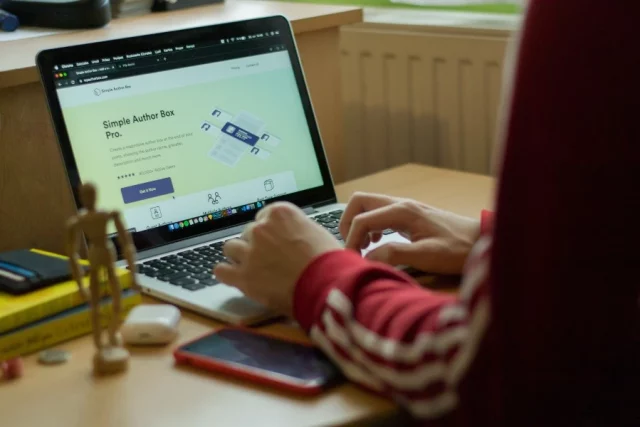Have you ever wondered why your website might be lagging behind in the success of your business? Or are you simply interested in learning more about how to improve its performance so that it doesn’t fail when it comes to attracting new leads or converting visitors into customers? Having a great website is imperative for a modern business, and even if it was top-notch when it first came out, it’s important to stay in touch with new expectations and deliver on what may be missing. While doing so isn’t always simple, there are 6 tips that can help with your website redesign process.
1. Personalization Strategy
Even if you don’t have the biggest business around, your website should be built with a personalized strategy to make it easier for visitors to engage and connect with your brand. This personalization is all about picking up on visitor actions such as time spent on web pages or scrolling patterns and then offering them content that’s more appealing based on those actions. The main benefits of website personalization include increasing the level of trust between your business and its visitors, increasing conversion rates while decreasing bounce rates, increasing customer satisfaction scores, decreasing cost-per-lead while increasing the number of leads generated, and more. Using the data your website gathers, personalization software along with your own efforts offers you the ability to determine what content each visitor is most interested in and how they got to your site.
2. Make It Intuitive
One of the most important rules of good web design is to make it as intuitive as possible. In other words, you don’t want to make your customers think about what their next action should be. When they land on your home page, you want them to realize where they can find what they’re looking for at a glance. For example – if they want to learn more about your business, they’ll want to click on an “About Us” link and not on a “Contact us” link. Every time they have to stop to consider whether they’re on the right path to getting what they want, you’re increasing the chances of them giving up on the search. It’s important to note, though, that designing an intuitive home page is the easy part. However, you need to also consider that at least some of your customers will visit your website following outside links – whether from your social media posts or from other websites sharing your content. That means that each page of your website needs to be just as easy to navigate. If you’re not designing an intuitive experience for them, they’ll bounce back to the search engine very quickly.
3. The 1-Click Rule
Just like certain segments of your website will become outdated over time, so will the rules that were once considered golden. Up until relatively recently, the 3-click rule was one of the cornerstones of proper UX design. In essence, it means that a website needs to be designed in such a way that it can’t take a user more than 3 clicks to get to what they want – otherwise they’ll grow frustrated and leave your website entirely. While it’s still important to get rid of any potentially unnecessary clicks – you want the experience to be as streamlined as possible – it might be better to follow the new 1-click rule. What that entails is simply that each click a user makes needs to bring them tangibly closer to their goal. It needs to have a reason and purpose. Again, the key here is in easy navigation that doesn’t require a big learning curve. You want to focus on how the customer thinks, what their expectations for a website in your niche are, and if you can improve on their experience without making drastic changes that might cause them to stop and ask themselves whether they’re going the right way. Of course, if you think you’ve found a much better layout for your website than what the norm is – by all means, introduce the change. However, you need to make certain that the user won’t mint the unfamiliarity of the new layout.
4. Optimization And Responsiveness
Both of these aspects are very important, and they go hand in hand. The optimization aspect stems from the content you’re actually putting on your website – is it high-quality? Is it true? Is it accurate? Does it contain all the necessary SEO components? How long is it? Is it engaging enough, or does it lack detail? The responsiveness aspect is the way in which your site adjusts to different screen sizes. It’s particularly important if you’re trying to achieve a certain type of ranking for mobile queries – Google has specifically stated that they prefer sites that automatically adjust themselves to fit the screen, as it makes the experience much easier for users.
5. Decluttered But Impactful
Most websites have too many words on them – either because there are simply too many or because the font is just too small. Some just have too much content in general. If there’s a ton of things jumping out from a page, it’s hard for any one of them to really stand out – it simply becomes noise. Keep in mind that, as with most aspects of life, less is more here too. It’s better to have a smaller number of high-quality words on your website as opposed to a whole lot of filler content. At the same time, you want to ensure that the user is constantly reminded of where they are. Having your logo and the name of your business visible on every page is important. However, your company’s motto doesn’t need to be on each page – you can do that on the front page, and follow it up with a brief description of who you are right below the fold. It’s a matter of finding a balance of a decluttered design that’s pleasing to see without it being so subtle that it becomes easily forgettable.
6. Know Your Goals
It’s important to keep the reasons why you’re redesigning your website in mind during the entire process. Knowing what your goals are – whether it’s higher conversion rates, increased visibility, or an updated brand image – will help you with your design choices. All the changes you make need to be in service of those goals. Of course, if you find ways to improve on other aspects that weren’t your primary concern – go ahead and implement them. However, always make sure that your main goals are met first. If you have multiple goals, it’s also important to prioritize them, because sometimes one could clash with the other. An updated brand image, for example, might affect your conversion rates negatively, meaning that you’ll need to adjust accordingly.
Your website is an integral part of your business. It’s the entranceway to your product or service, and it needs to be coherent with what you offer. Today, users are extremely picky about their online experience – and these 6 tips will help you reach those expectations. If you keep the user in mind at all times, you’re well on your way to building a website that’s both aesthetically pleasing to look at and fully optimized for easy use.














